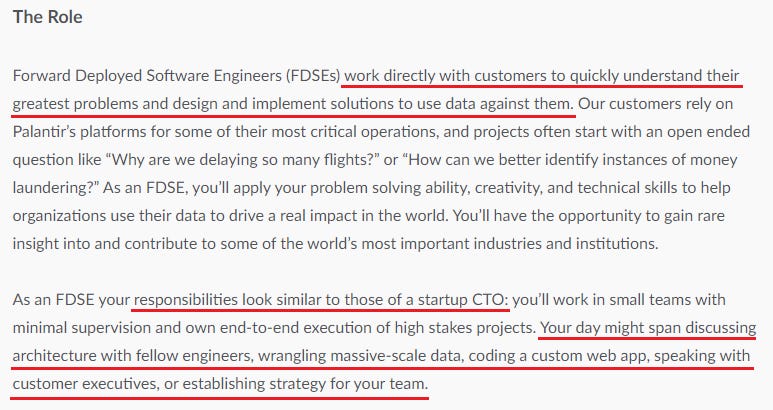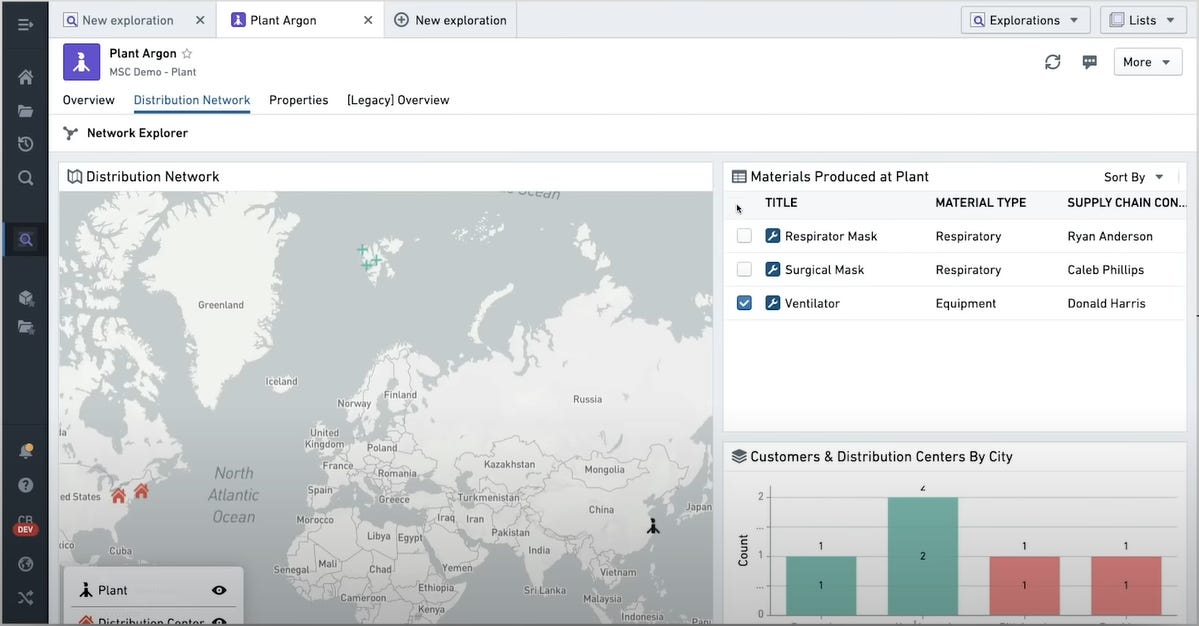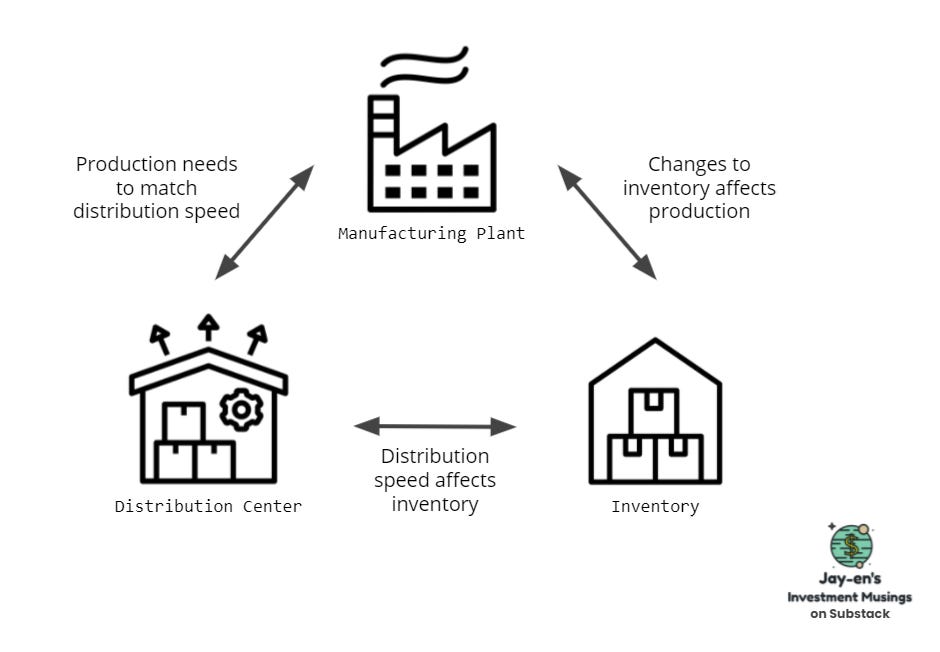Palantir (PLTR) Broken Down by a Software Engineer
A high-level breakdown on how Palantir works using simple English. No financials, just pure explanation of who they are and what they do.
There seems to be quite a lot of confusion over what Palantir does. I see it in articles, Youtube comments and even in a chat filled with software engineers. I think much of this confusion arises from them saying they are a tech company but they look like they do consulting and they don't have standard tech products that solve a specific problem. Their demo day presentation is also not easy to understand, especially for those who don't have a technical background. As an investor, I have spent some time digging deeper into what they do so I hope I can offer some clarity by explaining it in simpler terms.
DISCLAIMER: The content of this post is based on my own understanding of Palantir and should not be construed as facts. As always, your opinions and suggestions are welcomed in the comments.
What does Palantir do?
Palantir is a software company providing customised data-driven solutions to solve problems faced by their clients. This actually sounds similar to what a consultancy company does right?
Misconception: Palantir is a consultancy company
Based on personal experience with Palantir, it is definitely not a consultancy firm. For some background, I previously applied for the Forward Deployed Software Engineer (FDSE) role at Palantir (but was rejected). Based on my Q&A with the HR (and job description in the picture below), this role was more like a software engineer position sprinkled with a little bit of consulting. The job requires you to go down to the client's office to talk to them on top of designing technical solutions which is highly unusual for a technical role. The reason for having FDSEs instead of consultants is that the company wanted solutions to be technology/engineering-centric i.e. Palantir wanted to create tech that was good enough to sell itself. Therefore, Palantir's strong focus on technology places it firmly in the tech company category, not consultancy.

What products do Palantir offer?
There are two products: Gotham and Foundry. There's Apollo too but since it is an internal tool, I will not go into it in detail.
Apollo
It is a continuous delivery and infrastructure platform used internally to manage and deploy the Gotham and Foundry platforms. For clients dealing with classified government data, software has to be run on private networks with data being stored on-premise. This means that Palantir cannot deliver software updates through the internet like how they normally do for Foundry (which is on the public cloud). Apollo is the solution to this problem. It can "automatically deliver platform upgrades without any user downtime or human intervention, regardless of environment". For more details on Apollo, you can read this blog post by Palantir here.

Gotham
Gotham is mainly used by US government organisations (mostly in the defense sector) so many details of their projects are confidential. However, there were some news articles which claimed that Gotham played a big role in locating Osama Bin Laden. When asked to comment on the rumour, Alex Karps' response was: "That’s one of those stories we’re not allowed to comment about". Although Palantir did not confirm the rumour, it has posted links on its website to articles mentioning their involvement. If the rumours are true, then we have some idea of how powerful Gotham can be.
How it works
The Gotham platform can be thought of as an Artificial Intelligence (AI)-powered data-crunching machine which makes sense of different types of data coming from many different sources to enable users to make faster and better decisions. As the environment changes, updated information are immediately available to all users of the software.
To get a better idea on how the software works, watch this short 4min demo clip on how Gotham can be used to safeguard national security by improving operations planning.
Foundry
Foundry is the product used by commercial clients.
How it works
It is quite similar to Gotham but the focus is on data integration and management. Let's use an example to illustrate this. For a manufacturing plant, there might be many sensors generating data every second, minute or hour to keep track of production. On top of that, data on inventory and distribution has to be monitored too. Together, these data can inform management of the manufacturing plant's capacity and efficiency. Analysing data that are collected in different formats and stored in different places is difficult, time-consuming and often involves some form of manual or extra work. This is where Foundry comes in. By unifying and mapping out data, Foundry helps companies to answer mission-critical questions quickly such as when to load up on inventory and how much to speed up production based on distribution rates.
To understand Foundry better, let's dig deeper into the main modules of Foundry. There are three featured modules: Resource Optimizer, Ontology and Simulation Engine.
The Resource Optimizer is quite straightforward to understand. It helps the business to allocate resources efficiently to get the most of what they have.
The Ontology module organises data and presents them in a human-readable representation of the entire organization. As different teams feed new insights (new data or relationships between data) into the ontology, better insights can be drawn to inform an organisation’s strategic and tactical business decisions. Having this feedback loop is important because more information and insights being fed into the system leads to better business intelligence that is adaptive to changing landscapes. This short 2.5min video on how Palantir has helped Airbus transform the factory floor with data.
The Simulation Engine allows users to play out hypothetical scenarios (e.g. how much inventory to stock up if demand increases) and pass the outputs of the simulation to other teams (e.g. finance and resource teams) for better business planning.
To get a glimpse into an actual product, I would highly recommend watching Tom Nash's video for a run through of some of Skywise use cases (basically Foundry customised for Airbus).
Value Proposition
1. Ease of use
Gotham and Foundry abstract away the technical complexity of data collection and analysis so that people can ask and answer complex questions without having technical knowledge. This reduces the time needed to train employees on how to use the software. Based on Palantir's blog post, customers such as BP and LANXESS who adopted the use of Enterprise Resource Planning (ERP) systems experienced significant cost savings within weeks.
2. Rapid integration and frequent updates
Palantir is able to get the platform up and running for customers in 14 days on average. In some cases, it can even be done in six hours. Compared to other solutions which can take weeks or months to be integrated or deployed, these numbers are excellent.
Palantir also makes sure that their customers have the latest version of software by delivering frequent upgrades to their platform. Palantir's Apollo handled 150,000+ upgrades per week across environments in Q4 2020, up from 40,000+ upgrades per week in Q2 2020. This means that Palantir's customers are receiving tons of updates to their software everyday. Check out this video by Tom Nash (from 8:18 onwards) which shows the sheer amount of updates to skywise in just one day.
3. Value (Time and cost-savings)
Apart from rapid integration and upgrades, Palantir delivers immense value to their customers. BP, one of the largest oil and gas companies, has generated over $1 billion of value in 2020 by adopting Foundry. The United Nations' World Food Program has saved US$30 million by using Palantir and could save as much as US$100 million annually once the platform is rolled out more broadly.
Other than looking at the amount saved per customer, we can gauge impact and customer satisfaction by looking at whether customers renew their contracts and how long these new contracts last. Unfortunately, I could not find the percentage of contract renewals or Net Revenue Retention (NRR). An alternative would be to see which customers renew their contracts. Recently, there were a few large and prominent organisations such as BP, the Royal Navy and the CDC who renewed their contracts with Palantir. BP renewed for five more years (nine-figure contract), the Royal Navy for an unspecified number of years and dollars and the CDC for one year ($7.4M contract). Being able to attract and retain big players or renowned institutions in different industries validates the value of Palantir's work.
In simpler English,
Palantir's mission is not to replace human intelligence but to augment it. Similar to how Tony Stark's AI assistant, J.A.R.V.I.S., informs Tony about critical information during battle, Palantir empowers organisations with valuable insights from data so that they can make better decisions.












